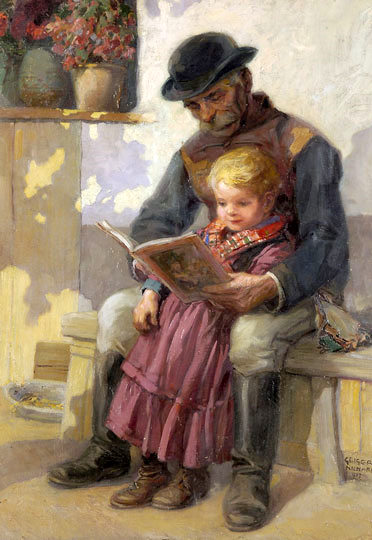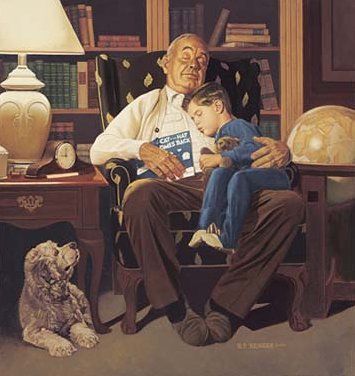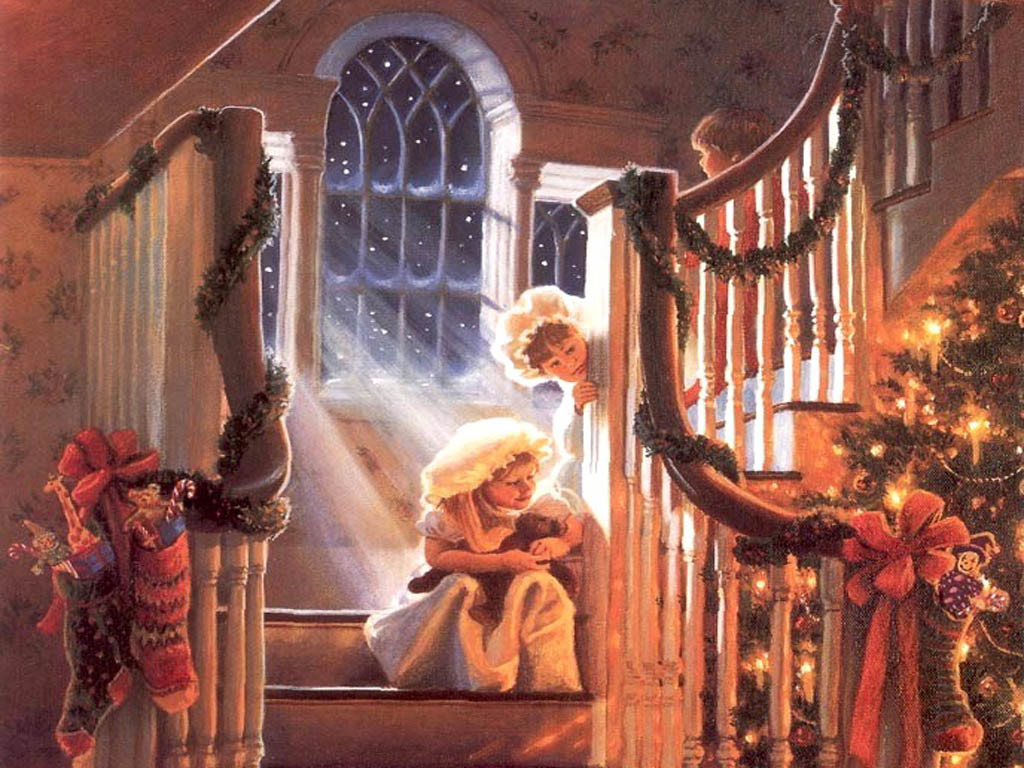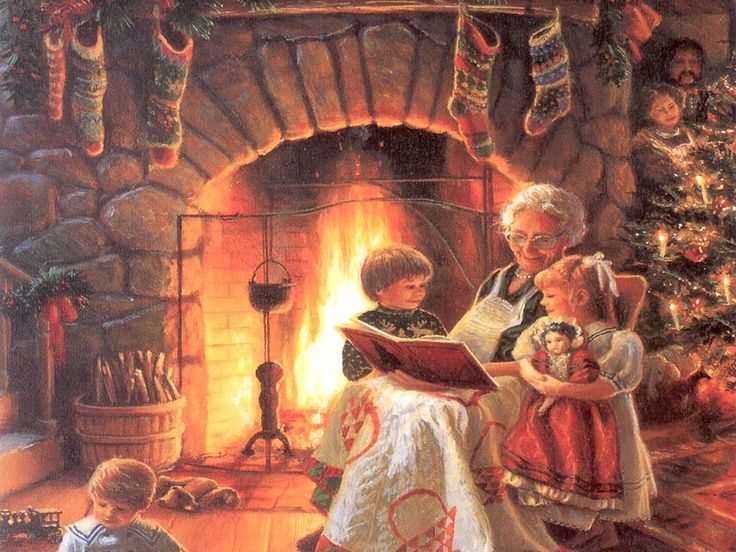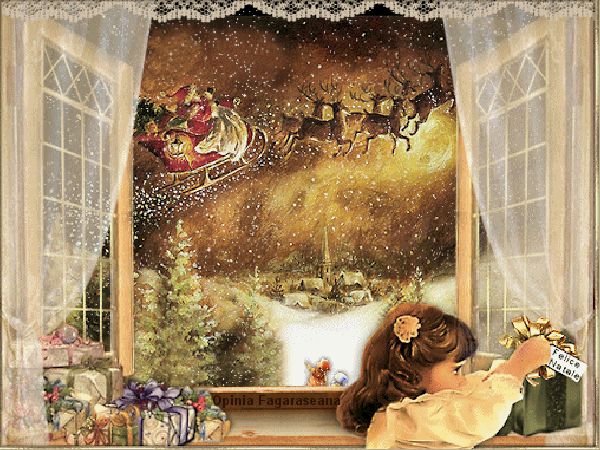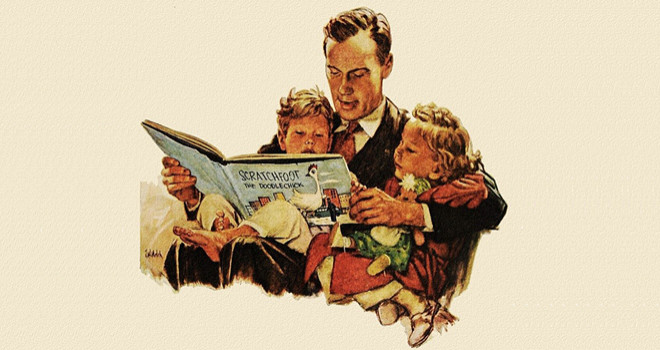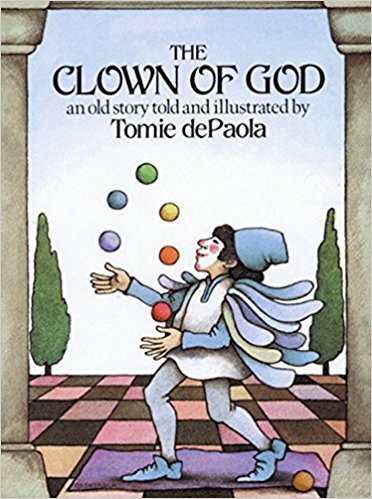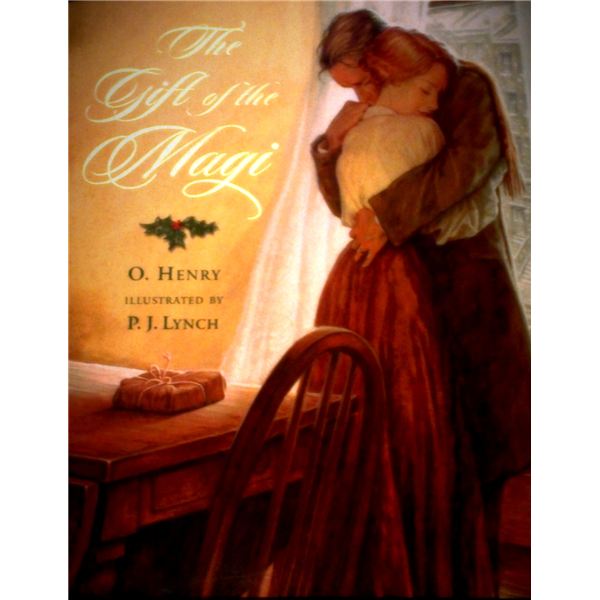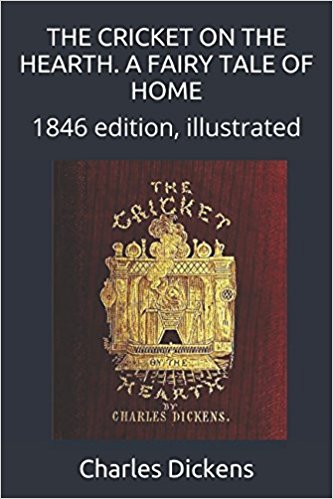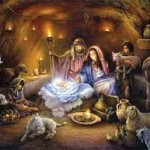Cuentos infantiles navideños
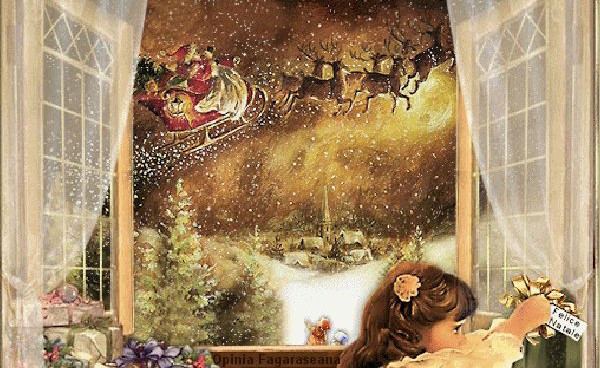
Créame que le entiendo. La estupidez de lo políticamente correcto y la ideología de género ha invadido todo: el cine, la literatura, la televisión, el periodismo, la música, el teatro… sí, también la literatura infantil y los cuentos.
Donde antes había cuentos entrañables y mágicos, ahora hay cuentos que adoctrinan en ideología de género y en otras paparruchas con una calidad pésima en textos y en ilustraciones. Se ha perdido la esencia de los cuentos infantiles en este alarde de mediocridad y lavado de cerebro que todo lo alcanza.
Dado el panorama devastado que encontramos en la literatura infantil actual, deje que le recomiende algunos cuentos clásicos que no pasan de moda y que son una maravilla. Cuentos llenos de valores que nos siguen enriqueciendo.
Lea estos cuentos a sus hijos, deje que los niños los lean y se impregnen de lo que es literatura infantil de calidad que jamás olvidarán. Regale estos cuentos y desprecie lo que le ofrecen en las librerías actuales como si vendieran joyas (la mayoría es mierda, créame, lo puede ver usted mismo). Pero, ¡ay estos clásicos! ¡Son imperecederos! ¡Son cuentos extraordinarios!
Sorprenda a sus hijos, sobrinos, nietos y niños en general con unos bonitos cuentos infantiles llenos de buenos valores cristianos. Serán mejores personas en el futuro y con más sentido común.
El grillo en el hogar, de Charles Dickens
Las Navidades son las fiestas más acogedoras: fogatas, festejos, familia … y gente de las hadas. Los invisibles dioses y guardianes de la domesticidad gorjean con la vigilancia invisible de los grillos en los hogares de todos los hogares, y es con esta imagen que Charles Dickens desarrolla un cuento de Navidad sobre la fractura y el forjado de una familia. A través de anhelos, traiciones y reuniones, el grillo angelical mantiene el ritmo de la vida y el amor que mantiene unida a cualquier familia. Charles Dickens fue llamado «El hombre que inventó la Navidad» ya que sus escritos instituyeron una comprensión verdadera y caritativa de la Navidad. Dickens sacudió al mundo del cosmopolitismo de su época, incluso cuando sacan ese mismo mundo del comercialismo y el secularismo de hoy, reemplazando las preocupaciones impías con un humanitarismo sagrado. Dickens descubrió la Navidad indígena como un tesoro de hadas perdido hace mucho tiempo, y The Cricket on the Hearth (1845) gorjea con la alegría hogareña que sintió con tanta fervor y compartió con un toque de hada recién descubierto. Hay testigos de Navidad que corroboran y cooperan con Luke y Matthew, y Charles Dickens es uno de ellos. Hay creaciones que profesan y procesan desde las Escrituras, y The Cricket on the Hearth es una de muchas.
Esta historia requerirá sesiones múltiples. Separe los muebles de las paredes con un anillo apretado y cómodo, y permita que los niños que escuchan, jueguen o dibujen en silencio sobre el suelo
.
The Cricket on the Hearth, A Fairy Tale of Home by Charles Dickens
Christmastime is the homiest holiday: firesides, feasting, family…and fairy folk. The unseen gods and guardians of domesticity chirp with the invisible watchfulness of crickets on the hearths of every home, and it is with this image that Charles Dickens unfolds a Christmas tale about the fracturing and re-forging of a family. Through longings, betrayals, and reunions, the angelic cricket keeps the tempo of life and love that holds any household together. Charles Dickens was called “The Man Who Invented Christmas” as his writings instituted a true and charitable understanding of Christmas. Dickens jarred the world out of the cosmopolitanism and puritanism of his day, even as they jar that same world out of the commercialism and secularism of today, replacing unholy preoccupations with a holy humanitarianism. Dickens discovered the indigenous Christmas like a long-lost fairy treasure, and The Cricket on the Hearth (1845) chirps with the homely cheer he felt so fervently and shared with a new-found fairy touch. There are Christmas witnesses that corroborate and cooperate with Luke and Matthew—and Charles Dickens is one of them. There are creations that profess and process from Scripture—and The Cricket on the Hearth is one of many.
This story will require multiple sittings. Pull the furniture away from the walls in a close, comfortable ring and allow listening children to play or draw quietly on the floor.
El regalo de los magos de O. Henry (William Sydney Porter)
Una pequeña historia de amor, coraje, lágrimas y felicidad terrible. O. Henry’s The Gift of the Magi (1905) respira con ese espíritu de sacrificio de regalar que hace de la Navidad una alegría. Aunque breve, su memoria permanece larga con los lectores, ya que la gente no olvida pronto las cosas que los dejan con el corazón roto. En sus riquezas materiales, Della y Jim se comparan con la Reina de Saba y el Rey Salomón. Con la pérdida de sus riquezas, ya no se los compara con los monarcas del Antiguo Testamento, sino con los del Nuevo Testamento: los Reyes Magos. Estos dos jóvenes amantes son descritos como tontos (como lo son los amantes); pero a veces se requiere necedad para llegar a la sabiduría (como demuestran los amantes). Nadie puede saber la sabiduría de darse el regalo de uno mismo hasta que uno se entrega como un tonto. Al dar regalos en Navidad, las personas de fe deben darse primero a sí mismas y luego a los presentes. No hay ningún regalo si no hay sacrificio, y el obsequiar debe siempre incluir algunas lágrimas: las aguas que hacen los regalos puros.
Muy recomendable es la edición Aladdin Publishing con ilustraciones de Lisbeth Zwerger, mejor leída con mantas, zapatillas y té.
The Gift of the Magi by O. Henry (William Sydney Porter)
A tiny tale of love, courage, tears, and terrible happiness, O. Henry’s The Gift of the Magi (1905) breathes with that spirit of sacrificial gift-giving that makes Christmas a joy. Though short, its memory stays long with readers, for people do not soon forget things that leave them brokenhearted. In their material riches, Della and Jim are likened to the Queen of Sheba and King Solomon. With the loss of their riches, they are no longer compared to Old Testament monarchs, but with New Testament ones—the Magi. These two young lovers are described as foolish (as lovers are); but sometimes it requires foolishness to arrive at wisdom (as lovers prove). No one can know the wisdom of giving the gift of oneself until one gives oneself up like a fool. In giving gifts at Christmas, people of faith must give of themselves first, and then in presents. There is no gift if there is no sacrifice, and gift giving should always involve some tears—the waters that make gifts pure.
Strongly recommended is the Aladdin Publishing edition with illustrations by Lisbeth Zwerger, best read with blankets, slippers, and tea.
La clásica historia de O. Henry sobre los regalos más sabios de la Navidad, traída a la vida por el arte extraordinario de P.J. Lynch, es un regalo para compartir y atesorar.
En un lamentable piso de Nueva York, Della llora mientras cuenta las pocas monedas que ha ahorrado para comprar un regalo de Navidad para su esposo, Jim. Un regalo digno de su devoción requerirá un gran sacrificio: vendiendo su cabello largo y hermoso. Jim, mientras tanto, ha hecho un sacrificio por Della que no es menos difícil. Al intercambiar regalos en Nochebuena, el descubrimiento de lo que cada uno ha hecho los llena de desesperación, hasta que se dan cuenta de que los verdaderos regalos de la Navidad se pueden encontrar más fácilmente en su humilde apartamento que en cualquier tienda. O. Henry pinta un retrato magistral del amor inquebrantable, un refugio del mundo exterior. La intensidad de su historia se refleja en el elocuente arte de P.J. Lynch, en el que cada mirada, cada gesto, cuenta una sutil verdad.
O. Henry’s classic tale of the wisest gifts of Christmas, brought to life by P.J. Lynch’s extraordinary art, is itself a gift to share and treasure.
In a shabby New York flat, Della sobs as she counts the few coins she has saved to buy a Christmas present for her husband, Jim. A gift worthy of her devotion will require a great sacrifice: selling her long, beautiful hair. Jim, meanwhile, has made a sacrifice for Della that is no less difficult. As they exchange gifts on Christmas Eve, the discovery of what each has done fills them with despair, until they realize that the true gifts of Christmas can be found more readily in their humble apartment than in any fine store. O. Henry paints a masterly portrait of unfaltering love, a haven from the harsh world outside. The poignancy of his story is captured in P.J. Lynch’s eloquent art, wherein every glance, every gesture, tells a subtle truth.
El payaso de Dios de Tomie dePaola
Tomie dePaola, The Clown of God (1978) es una hermosa y antigua historia sobre un malabarista cansado y desgastado que realiza su último acto ante una estatua de la Virgen Madre y el Niño en una iglesia oscura en Nochebuena. Este regalo lúdico de volar bolas de colores fue un regalo de deleite ofrecido a los Reyes del Cielo, y, cuando el payaso cae al suelo en la muerte, su regalo es bendecido por un milagro. El payaso de Dios no puede ofrecer nada más que su frivolidad, pero la raza humana es, después de todo, una raza frívola. Pero el juego es puro. Incluso es profundo. Como las Escrituras nos recuerdan, la Sabiduría estuvo con Dios desde el principio, jugando en su presencia y en su creación. Cristo se hizo niño para hacer que todo sea nuevo, como lo hacen los niños cuando juegan. El mundo entero no es más que una pelota, un juguete acariciado, un querido juguete, sostenido en la mano del Niño. El hombre está llamado a tocar delante de Dios tal como lo hizo el payaso haciendo malabarismos, e incluso como Dios mismo lo hace en Su cosmos.
Harcourt y Brace Jovanovich Publishers ofrecen una hermosa edición de este libro con excelentes presentaciones de las propias ilustraciones distintivas y deliciosas de dePaola.
Tomie dePaola’s The Clown of God (1978) is a beautiful old story about a weary, way-worn juggler who performs his last act before a statue of the Virgin Mother and Child in a dark church on Christmas Eve. This playful gift of flying colored balls was a gift of delight offered to the Monarchs of Heaven, and, as the clown falls to the floor in death, his gift is blessed by a miracle. The clown of God could offer nothing but his frivolity, but the human race is, after all, a frivolous race. But play is pure. It is even profound. As Scripture reminds us, Wisdom was with God from the beginning, playing in His presence and in His creation. Christ became a Child to make all things new, as children do when they play. The whole world is but a ball, a cherished toy, a dear plaything, held in the hand of the Child. Man is called to play before God just as the juggling clown did, and even as God Himself does in His cosmos.
Harcourt and Brace Jovanovich Publishers offer a beautiful edition of this book with excellent presentations of dePaola’s own distinctive and delightful illustrations.
La pequeña cerillera de Hans Christian Andersen
La pequeña cerillera de Hans Christian Andersen (1845) se mueve con destreza entre los reinos de la parábola y la metáfora, como lo hacen muchos de sus cuentos de hadas. Es una lectura desafiante para el hombre moderno y un desafío para él también. La historia tiene lugar durante la fría temporada navideña y nos recuerda el llamado de la Escritura a servir a los pobres y humildes, a quienes «levantará del polvo de este mundo, sí, de las cenizas». Pero Andersen también retrata, descalzo, niña sufriente que vende fósforos en la calle, una imagen de la humanidad heredada de la naturaleza caída que nos ha otorgado desde el primer pecado. No somos más que vagabundos heridos golpeados por la dureza de este valle de lágrimas. Pero en medio de esta peregrinación tan a menudo llena de tristezas, recibimos momentos de calidez y visiones del banquete eterno al que todos somos llamados al final. Deberíamos ser como la niña pequeña y no entristecernos por la estrella que cae, pero reconocerlo como una señal de que un día estaremos con aquellos que amamos, y conoceremos «la Paz de Dios, que sobrepasa todo entendimiento».
Con el objetivo de evitar las ilustraciones sentimentales, asegure una colección de cuentos de hadas de Andersen ilustrada por Arthur Rackham de Weathervane. Guarde esta lectura para una tarde nevada.
The Little Match Girl by Hans Christian Andersen
Hans Christian Andersen’s The Little Match Girl (1845) treads deftly between the realms of parable and metaphor, as so many of his fairy tales do. It is a challenging read for modern man and a challenge to him as well. The story takes place during the cold Christmas season and reminds us of Scripture’s call to serve the poor and lowly, who “He will lift from the dust of this world-Yes-from the ashes.” But Andersen also portrays—through a barefoot, suffering little girl who sells matches in the street—a picture of mankind’s lot inherited in the fallen nature bestowed on us from the first sin. We are nothing more than wounded wanderers battered by the harshness of this vale of tears. But amidst this pilgrimage so often filled with sorrows, we are given moments of warmth and visions of the eternal banquet to which we are all called in the end. We should be as the little match girl and not be saddened by the falling star, but recognize it as a sign that we will one day be with those we love, and know “the Peace of God, which surpasseth all understanding.”
In the interests of avoiding sentimental illustrations, secure a collection of Andersen’s fairy tales illustrated by Arthur Rackham from Weathervane. Save this reading for a snowy evening.

